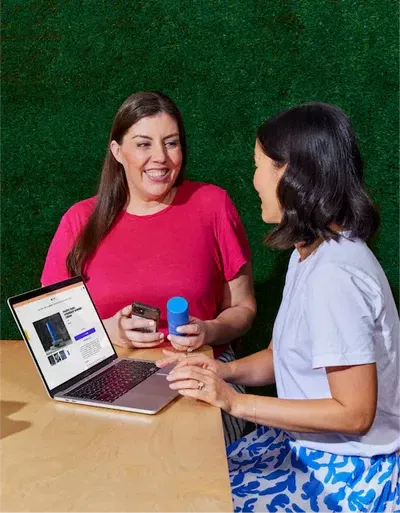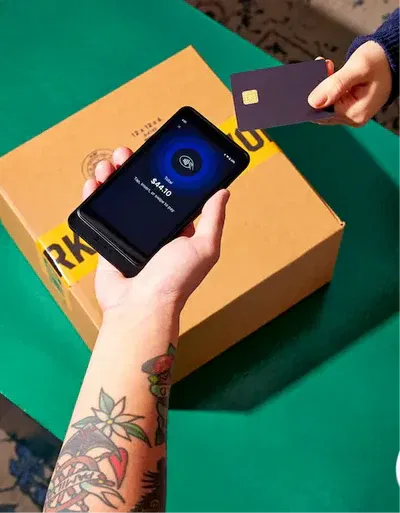Learning Web Programming: How to Get Started and Build Your First Website
Why Learning Web Programming Is a Superpower in 2025
Imagine being able to build a full website from scratch, troubleshoot issues like a pro, or even create your own online store without hiring a developer. That’s the power of learning web programming. In today’s digital world, whether you’re launching a startup, freelancing, or pivoting your career, knowing how the web works puts you in control.
If you’re just getting started with learning web programming, this article is your go-to roadmap. You’ll get practical steps, platform suggestions, expert resources, and actionable insights that make learning web programming not just possible—but enjoyable. Whether you’re diving into a web course, exploring a web tutorial, or taking a web coding for beginners approach, this guide will meet you where you are.
Let’s demystify web programming and help you gain real-world skills.
| Category | What to Do | What Not to Do | Why It Matters |
|---|---|---|---|
| Getting Started | Begin with HTML, CSS, and basic JavaScript | Don’t start with complex frameworks (React, Vue, etc.) | Builds a strong foundation for long-term learning |
| Learning Tools | Use beginner-friendly platforms like freeCodeCamp, Odin Project, Codecademy | Don’t rely only on random YouTube videos | Provides structured, high-quality educational flow |
| Practice Projects | Build real-world mini projects (to-do app, portfolio, landing page) | Don’t just copy-paste tutorials without understanding them | Reinforces concepts and builds a useful portfolio |
| Code Editors | Use Visual Studio Code or Sublime Text for writing code | Don’t write code in basic text editors like Notepad | Enables syntax highlighting, autocompletion, and better productivity |
| Version Control | Learn Git and GitHub early on | Don’t delay version control until late-stage development | Tracks your progress and promotes collaboration and backups |
| Design Responsiveness | Use media queries and flexible layouts | Don’t build only for desktop | Makes your websites usable on mobile and tablet devices |
| Debugging & Testing | Use browser dev tools, console logs, and unit tests | Don’t ignore browser compatibility issues | Ensures your web pages work across different platforms |
| Backend Learning | Explore Node.js, Express, or Python/Django after frontend basics | Don’t skip backend if you want full-stack skills | Opens doors to server-side logic, databases, and APIs |
| Community Help | Ask for help on Stack Overflow, Reddit, or Discord communities | Don’t isolate yourself when stuck | Accelerates your learning with real-time support |
| Online Resources | Refer to MDN Web Docs, W3Schools, JavaScript.info | Don’t rely on outdated or ad-heavy tutorial sites | Provides reliable and up-to-date programming references |
| Content Reuse | Revisit and refactor old projects with new skills | Don’t abandon older projects | Helps measure your progress and solidify concepts |
| Free Courses | Use platforms offering free web development courses and certification | Don’t assume paid means better | Saves money while still getting high-value education |
| Time Management | Set weekly coding goals (e.g., 5–10 hours/week) | Don’t binge-learn and burn out | Consistency builds long-term retention and skill growth |
| SEO & Optimization | Learn performance tuning, accessibility, and meta tags | Don’t overlook real-world deployment needs | Makes your sites user-friendly and search-engine ready |
| Long-Term Growth | Continue learning advanced topics like React, APIs, and deployment | Don’t stop learning after your first project | Ensures ongoing growth and adaptability in a fast-evolving industry |
What Is Web Programming and Why Should You Learn It?
Web programming (or web development) refers to writing code that powers websites and web applications. From the layout of a blog to the backend of a social media platform, every click, scroll, and form submission involves web programming.
Reasons to Start Learning Web Programming:
- High demand in the U.S. tech job market
- Freelancing opportunities with global clients
- Creative control over your own online projects
- Lucrative salaries even for beginners
- Skill flexibility—learn at your own pace and specialize later
Whether you’re exploring website development for beginners, or aiming to take a web building course, learning web programming is one of the most valuable skills today.
Understanding Frontend vs Backend in Web Programming
When learning web programming, it’s essential to understand two major parts:
| Aspect | Frontend | Backend |
|---|---|---|
| What it does | Controls how a site looks and feels | Powers how a site works behind the scenes |
| Tools | HTML, CSS, JavaScript | Python, Node.js, PHP, Ruby |
| Role | Manages user interface and interaction | Manages databases, server logic, APIs |
If you’re new, start with frontend programming—it’s more visual and provides instant results. Then branch into backend development as you grow.
How to Start Learning Web Programming as a Beginner
Starting your journey can be intimidating, but with the right steps, learning web programming becomes exciting.
Step-by-Step Plan:
- Take a Free Web Development Course:
- Start with HTML & CSS: These build the foundation of every web page.
- Learn JavaScript: It brings your websites to life with interaction.
- Build Mini Projects: Think of a portfolio, calculator, or personal blog.
- Explore Backend with Node.js or Python: Add server-side logic.
- Study Website Development through Capstone Projects: Combine your frontend and backend skills.
These steps form the backbone of your web programming online education.
Choosing the Right Web Course or Tutorial Platform
Here are top-rated options to learn website development and build job-ready skills:
| Platform | Best For | Key Features |
|---|---|---|
| Codecademy | Interactive web coding tutorial | Built-in exercises and instant feedback |
| Udemy | Affordable web site development | Lifetime access to structured lessons |
| Coursera | Academic web course | Certifications from universities |
| freeCodeCamp | Free web development | Real projects and community support |
| The Odin Project | Deep study website development | Full curriculum for frontend and backend |
If you’re serious about learning web programming, mixing structured and self-paced content from these platforms is a great strategy.
Essential Tools You’ll Use While Learning Web Programming
To be efficient while learning web programming, familiarize yourself with the right tools:
- Code Editor: VS Code or Sublime Text
- Browser Dev Tools: Chrome Developer Tools
- Version Control: Git & GitHub
- Design Mockups: Figma or Canva
- Terminal/Command Line: For backend and deployment tasks
Using these tools daily helps you think like a developer, not just a learner. They’re all essential in a practical web programming online workflow.
Core Skills to Master in Web Programming
When you’re learning web programming, focus on mastering these key skills:
- HTML & CSS – Page structure and styling
- JavaScript (JS) – Interactivity and functionality
- DOM Manipulation – Dynamic content updates
- Responsive Design – Mobile-first development
- APIs and AJAX – Connecting to external services
- Databases (SQL/MongoDB) – Data storage
- Frameworks (React, Express, Django) – Faster development
These are central to both beginner and advanced web coding tutorial materials.
Project Ideas to Practice Your Skills
Practice is everything when learning web programming. Here are real-world projects that test your skills:
- Personal portfolio website
- Responsive business homepage
- To-do list web app
- Blog CMS (Content Management System)
- Weather app using a public API
- eCommerce mockup site with cart
Each of these helps reinforce what you’ve studied in your web site development journey.
Common Mistakes Beginners Make (and How to Avoid Them)
Don’t fall into these traps when learning web programming:
| Mistake | Fix |
|---|---|
| Skipping HTML/CSS fundamentals | Master basics before moving to JS |
| Copy-pasting without understanding | Always read and tweak the code you borrow |
| Avoiding version control | Use Git from day one—it helps prevent code loss |
| Not testing on multiple devices | Mobile and tablet views matter |
| Trying to learn everything at once | Follow structured web tutorial paths and build incrementally |
Correcting these mistakes early ensures you develop solid habits during your study website development phase.
How Long Does It Take to Learn Web Programming?
There’s no one-size-fits-all, but here’s a rough idea:
| Commitment Level | Time to Learn Basics | Time to Get Job-Ready |
|---|---|---|
| Part-time (5–10 hrs/week) | 4–6 months | 8–12 months |
| Full-time (20–40 hrs/week) | 1–2 months | 4–6 months |
Consistency matters more than speed. With regular effort, you can learn how to build websites and web apps faster than you think.
Free Resources for Learning Web Programming
If you’re budget-conscious, here’s where to find high-quality, free web development material:
Each resource helps you learn to make website projects with real-world code challenges.
Where to Get Help While Learning Web Programming
The web dev community is vast and supportive. If you get stuck:
- Ask questions on Stack Overflow
- Join subreddits like r/webdev
- Attend free online meetups or webinars
- Join Discord coding communities
These connections make learning web programming less lonely and more effective.
Summary Table: What to Do, What Not to Do, Why It Matters
| Area | What to Do | What Not to Do | Why It Matters |
|---|---|---|---|
| Start Small | Begin with HTML, CSS, JavaScript | Don’t jump into frameworks too early | Establishes a solid foundation |
| Use Projects | Build real apps along the way | Don’t just watch videos passively | Builds portfolio and confidence |
| Follow a Curriculum | Use free structured paths (e.g., Odin, freeCodeCamp) | Don’t try to learn everything all at once | Keeps learning focused and measurable |
| Use Version Control | Learn Git and GitHub from day one | Don’t rely only on saving files locally | Encourages professional workflow |
| Ask for Feedback | Share your code and ask questions online | Don’t struggle in isolation | Accelerates learning and provides community support |
🔍 Top 15 Frequently Asked Questions: Learning Web Programming
1. What is web programming, and why should I start learning web programming today?
Web programming refers to writing the code that powers websites and web applications. When you’re learning web programming, you gain the skills to build everything from simple static web pages to complex dynamic applications like eCommerce stores or social networks.
Learning web programming is essential in 2025 because:
-
The tech industry is booming in the United States.
-
It opens doors to high-paying careers and freelance gigs.
-
It empowers you to build your own website or startup.
So if you’ve ever wondered about website development for beginners or how to get started with a web building course, this is your sign to jump in.
2. What are the best languages to learn when learning web programming?
When you’re learning web programming, these are the foundational languages you need:
-
HTML: The structure of a web page.
-
CSS: The styling of your page (fonts, colors, layout).
-
JavaScript: Makes your site interactive.
Once you master those, move on to backend languages like:
-
Python (beginner-friendly and powerful)
-
Node.js (JavaScript-based backend)
-
PHP (still widely used for WordPress sites)
These form the backbone of any web coding tutorial or web programming online program.
3. Can I learn web programming without any technical background?
Yes! Most people who start learning web programming don’t have a tech background. With free and paid resources like web courses or website programming tutorials, you can go from complete novice to intermediate developer in just a few months.
All you need is consistency, curiosity, and a willingness to practice daily.
4. Where can I find the best web course for beginners in the United States?
Some of the best platforms offering beginner-focused web course content include:
These platforms are ideal if you’re focused on learning web programming and want to study website development at your own pace.
5. How long does it take to learn web programming well enough to build real websites?
Here’s a rough breakdown depending on your pace:
-
Basic web pages (HTML/CSS): 2–4 weeks
-
Interactive sites (JavaScript): 1–2 months
-
Full websites with backend: 3–6 months
Whether you’re in a web building course or using a self-paced web tutorial, regular practice (even just 1 hour a day) will lead to big results.
6. What is the difference between web programming and web design?
While they often overlap, there’s a big difference:
-
Web design is about how a website looks (colors, fonts, layout).
-
Web programming is about how a website functions (logic, forms, databases).
If you’re focused on learning web programming, you’ll write code and build functionality. If you’re more artistic, you might start with design but still benefit from learning web programming basics.
7. Do I need to go to college to start learning web programming or get a job?
No. Most web developers in the U.S. are self-taught or have completed web development online programs. Employers value:
-
Real projects
-
GitHub portfolios
-
Problem-solving skills
You can land jobs or freelance work without a degree if you commit to learning via a solid website programming tutorial or hands-on web course.
8. What’s the best way to practice while learning web programming?
Here’s how to get hands-on:
-
Build a personal website
-
Clone a popular homepage (like YouTube or Netflix)
-
Follow project-based web tutorial guides
-
Participate in 100 Days of Code challenges
-
Contribute to open-source projects on GitHub
Practicing consistently is the secret to success when you’re learning web programming.
9. What tools or software do I need to start learning web programming?
You’ll need:
-
Text Editor: VS Code is the industry standard.
-
Browser: Google Chrome + DevTools
-
Version Control: Git & GitHub
-
Terminal: Command line basics
-
Online playgrounds: CodePen, JSFiddle
These tools are included in any comprehensive web coding tutorial and form your daily toolkit.
10. Are there any free web development platforms where I can host my projects?
Yes! You can publish and test your projects for free on:
-
GitHub Pages: Great for static websites
-
Netlify: Easy deployment and CI/CD
-
Vercel: Ideal for React/Next.js apps
-
Replit: Full-stack development in-browser
This means you can learn to make website projects and share them with the world for free.
11. What does a typical web programming project look like for beginners?
A basic project includes:
-
HTML structure: Header, main content, footer
-
CSS styling: Fonts, layout, responsiveness
-
JavaScript interactivity: Buttons, sliders, forms
-
Deployment: Publishing on GitHub Pages or Netlify
When you’re learning web programming, projects help you apply what you learn and build a portfolio.
12. How do I stay motivated when learning web programming gets tough?
Tips to stay motivated:
-
Join a study group or Discord server
-
Follow coding influencers or YouTubers
-
Track your daily coding habit
-
Break big concepts into smaller tasks
-
Celebrate small wins (like finishing a web tutorial)
Web learn platforms like freeCodeCamp have forums and communities to help when you’re stuck.
13. What are the most common mistakes to avoid when learning web programming?
-
Skipping the fundamentals (HTML/CSS)
-
Trying to learn too many languages at once
-
Not practicing enough
-
Copying code without understanding it
-
Ignoring mobile responsiveness
Fixing these bad habits early ensures long-term success in your web site development journey.
14. Should I focus on frontend or backend when learning web programming?
Start with frontend development:
-
HTML/CSS/JavaScript
-
DOM manipulation
-
Layout and responsiveness
Then move to backend:
-
Node.js or Python
-
Databases (MongoDB, PostgreSQL)
-
APIs and authentication
A balanced approach gives you full-stack capabilities. This progression is the foundation of any good web programming online path.
15. What jobs can I get after I learn website development?
Once you’ve mastered website programming tutorials and built a portfolio, you can apply for:
-
Frontend Developer
-
Backend Developer
-
Full-Stack Developer
-
Web Designer with coding skills
-
Freelance Developer
-
Tech Support or QA Analyst
U.S. job listings on platforms like Indeed or LinkedIn often accept self-taught developers if you can demonstrate your skills.
Conclusion: Start Learning Web Programming Today
Learning web programming doesn’t just teach you how to build sites—it gives you freedom. Freedom to create, launch, and monetize digital ideas. Whether you’re pursuing a career in tech or building a personal brand, mastering web development online is one of the smartest decisions you can make.
The key is to start. Pick a project, follow a structured path, and enjoy the process. In just a few months, you’ll go from curious to confident—and that’s the magic of learning web programming.
Ready to get started? Explore freeCodeCamp or The Odin Project and begin your journey into the world of code today.




